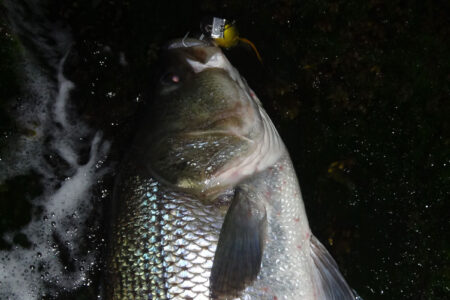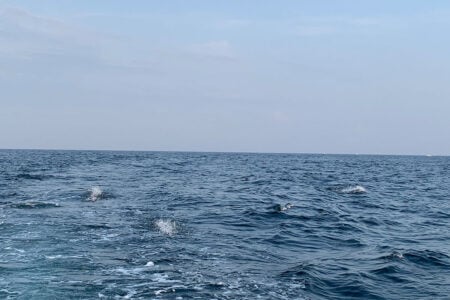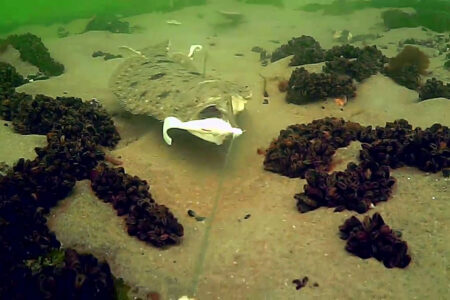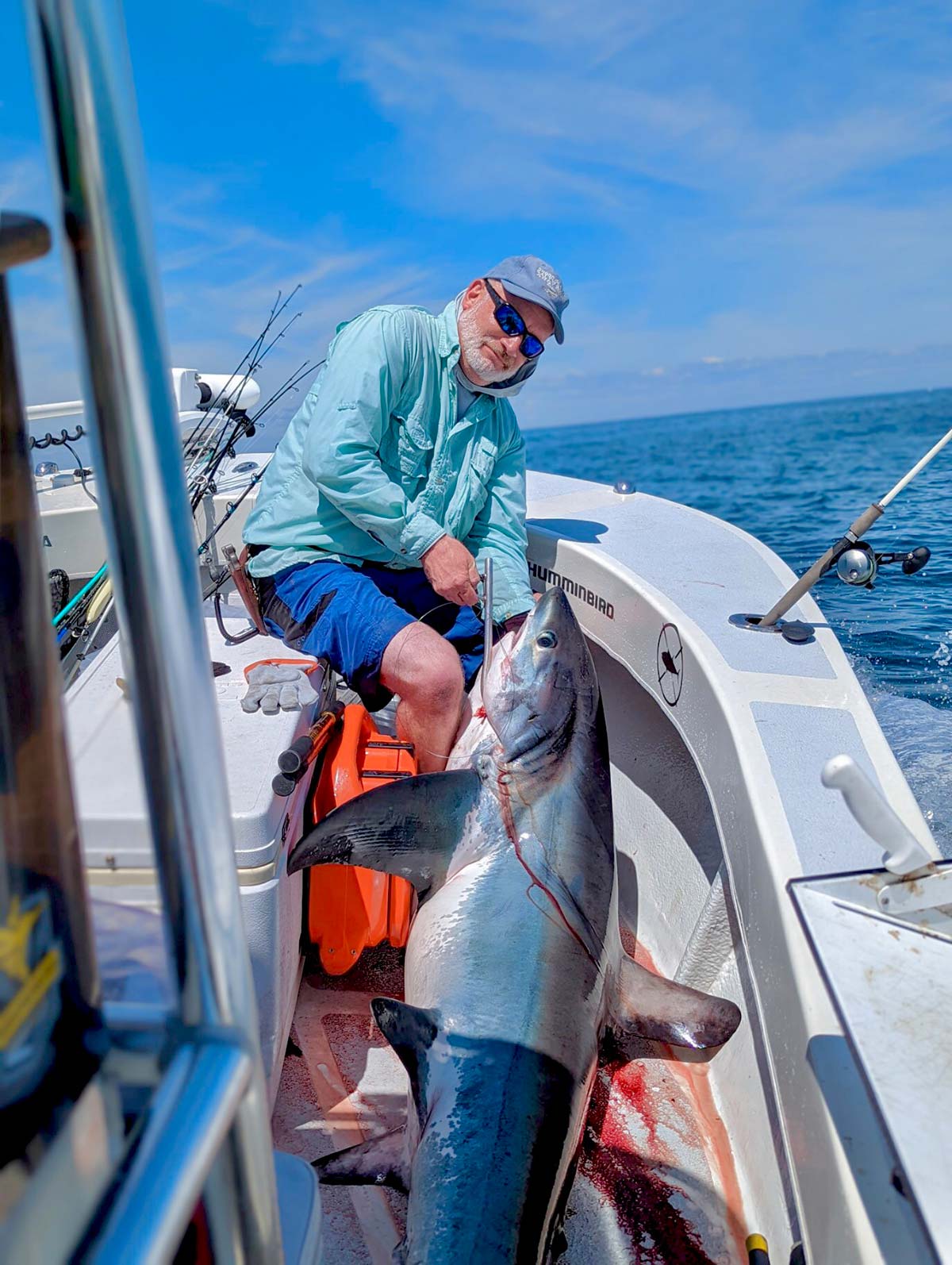
When opportunity knocks, answer the door!
I’ve been very fortunate throughout my life to have had opportunities to fish for and catch a broad variety of species; both fresh and salt. There are however, still a few that have continued to elude me despite my attempts to cross them off my list. Musky being one, as I have yet to land one despite having successfully served as net boy for two (both caught by my dad). I also lost my one and only battle with a native Pacific steelhead whose leap for freedom on the Elwha River is still burned into my memory.
A Burning Defeat
None of these fish however, were more significant to me than my failure to land a thresher shark. I had been defeated in my only encounter with one and I am putting that gently. That first matchup resulted in the only time in my life when I was forced to quit on a fish. When said shark decided to hang under the boat it magnified my error in choosing a rod that was a bit too long. This was coupled with poor technique on my part and my back simply locked up. I couldn’t move, forcing me to pass the rod to another angler. In review, I simply wasn’t ready for the task. I didn’t have the experience in fighting larger fish yet and was probably a bit dehydrated having already battled a few large blue sharks earlier that trip.
In short I was in shape for a sprint but showed up to a marathon. After handing the rod off to anther more capable angler, Capt. Mike Littlefield, I drank some water and was working on loosening my back up to perhaps retake the rod. Then, for some unknown reason, the wire let go and – just like that – the fish was gone approximately an hour into the fight.
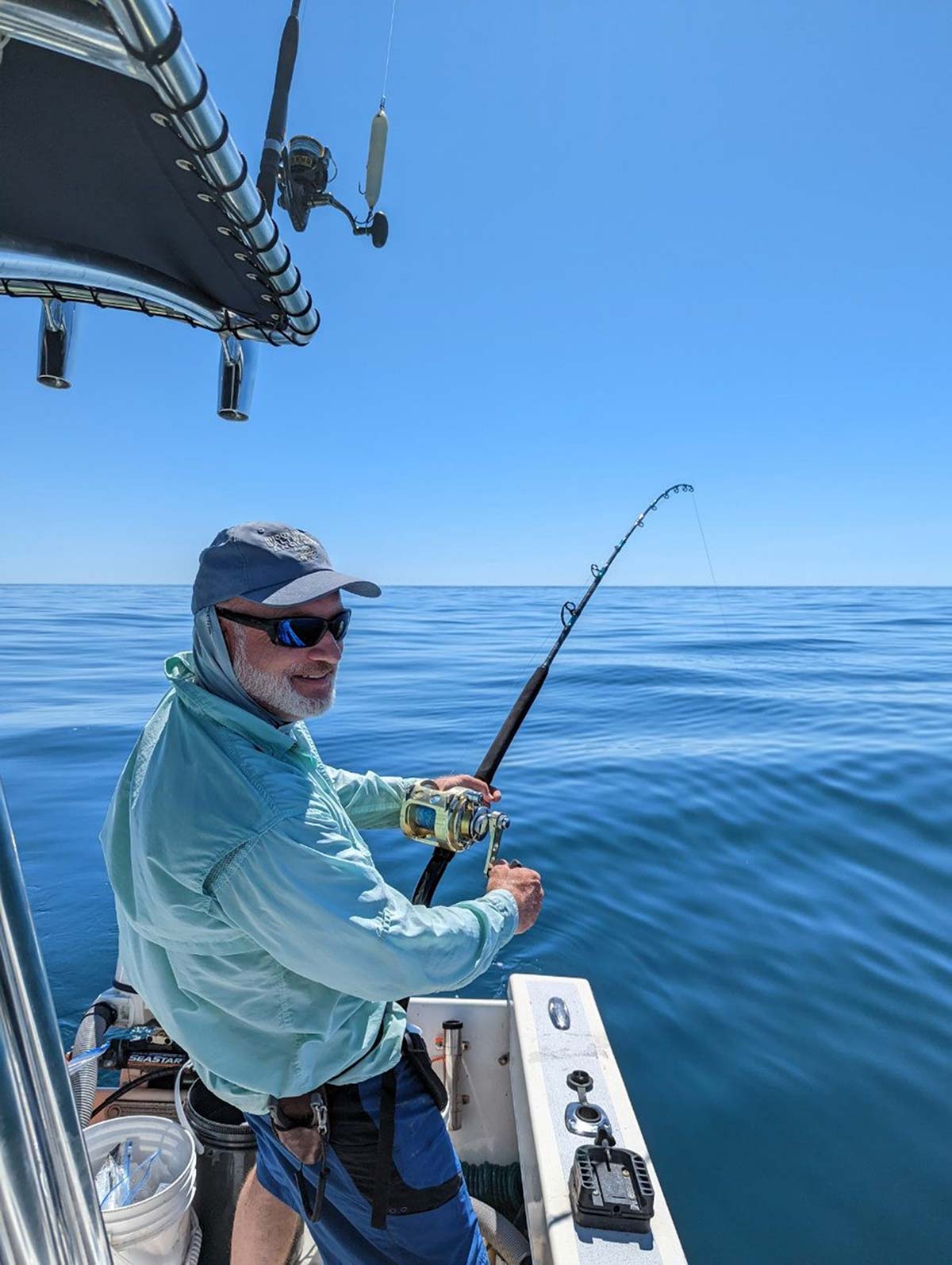
Wisdom & A Window
I could never have known that it would be nearly 10 years before I would have a crack at redemption. Fast forward to July 30th of last year and opportunity knocked once again. By now I was at the helm of my beloved Miss Colleen, all 19 feet of her and when a two-day weather window opened up I gathered up fellow RISAA members and Miss Colleen regulars David Dube and Darren DeSouto to make a run offshore for sharks. A call the night before from Capt. Littlefield had identified a small temperature break and after a brief discussion we decided it would be worth targeting rather than hitting my usual spot near Coxes Ledge. The first location we targeted turned out to have more gear on it than I liked so we pushed on and about four miles later, we found a smaller lump of hard bottom that had some life on it and not much gear, so we decided to set up.
Although I had not had many opportunities to go sharking since, that previous battle had remained stubbornly on my mind and I had to get another shot at one. In the meantime, I never missed a seminar on sharking and had spent the prior winter learning and practicing the Haywire Twist which was taught to me by Capt. BJ Silvia. I also learned the finer points of setting up chaffing gear thanks to Capt. Mike Littlefield. I perfected using crimps as taught by Capt. Thomas, and rigged up long leaders of 400-pound test mono for protection from thresher tails as Capt. Robbie Taylor had detailed in a recent seminar. I had also slowly picked away at adding gear to include a few Santiago 50s and eventually getting pair of rods made at Crafty One Customs in Portsmouth, RI. I felt as if I at least had the right set ups and was working with sound rigging.
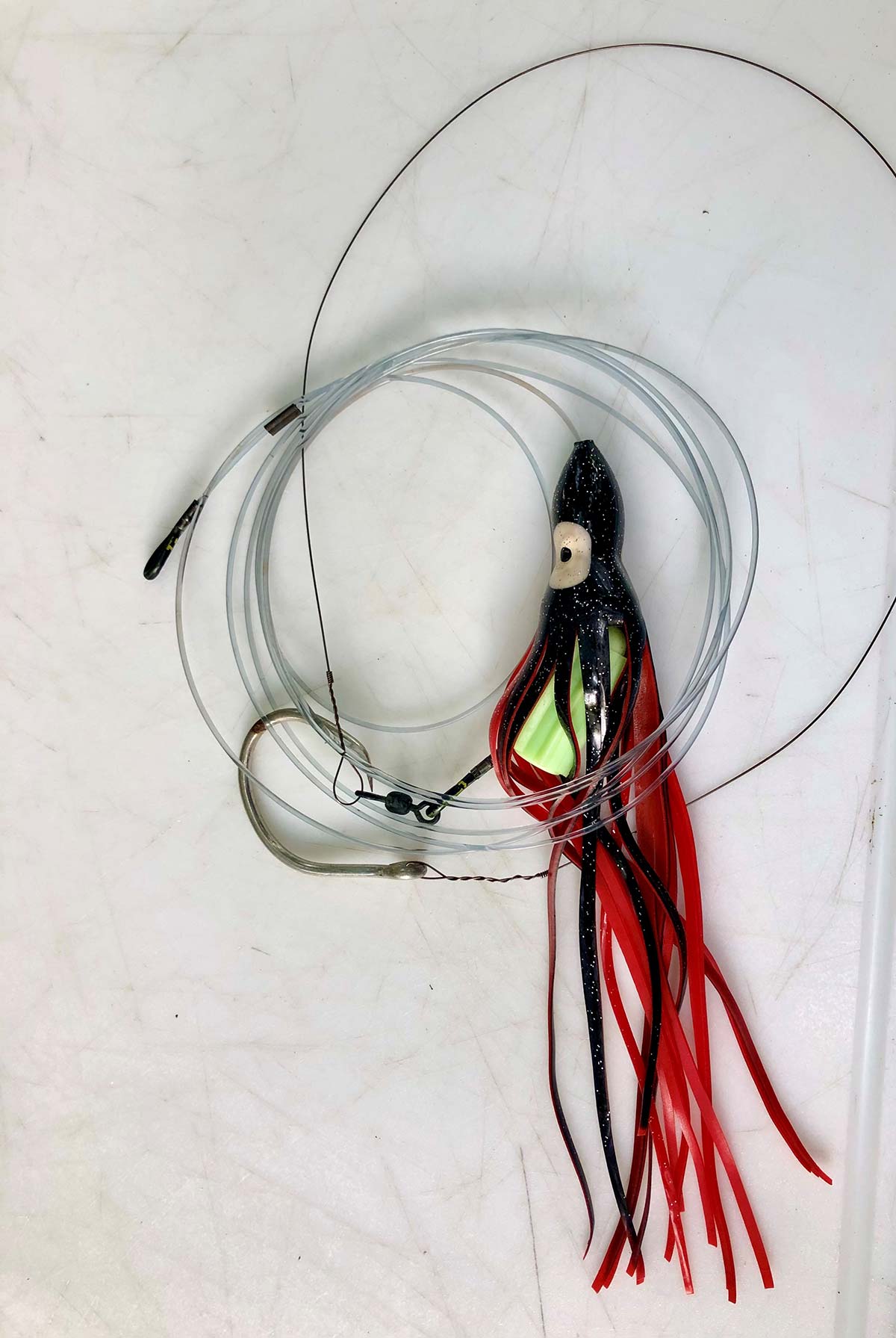
The Setup
With that as the backstory, our crew deployed the newly created rigs. I set out three rods; a deep rod (no balloon) at about 45 feet, then a ballooned one at 25 feet and another at 15. My rigs consisted of 3 feet of wire to a 16/0 in-line circle hook and 12 to 14 feet of 400-pound mono; crimped and chafe protected. The baits were jumbo squid I had previously caught and individually vacuum sealed. Each bait was sewn to look as though it were swimming with waxed thread onto the hook “swordfish style”. I had just gotten my federal permits at 11:50 p.m. the night before which turned out to be a good thing!
Once deployed we set the chum bucket (home-ground the previous winter) and Dave manned the chum line while we waited. We didn’t make it far into our first drift when the rig at 25 feet got slammed without warning; just smoked! Off to the races we were and then a full aerial, 8 feet in air with a 180-degree backflip upon feeling the hook, confirmed this was not a blue shark. We kept if off the back quarter for most of the fight with Dave working the helm and Darrin scouting for fixed gear and possible trouble in any direction. The thresher performed two more leaps and a few sustained runs. Its ability to change direction and come at the boat kept us all on our toes as we tried to prevent it from getting underneath us or allowing enough slack line where the shark might be able to get to the main line with its tail. As the shark began to show signs of tiring, the discussion about what a 54-inch fork length thresher actually looked like commenced. In the end we were pretty confident we were well over the minimum size of 54 inches, and we decided to try to retain her. I don’t carry a dart so the flying gaff was the best option we had.
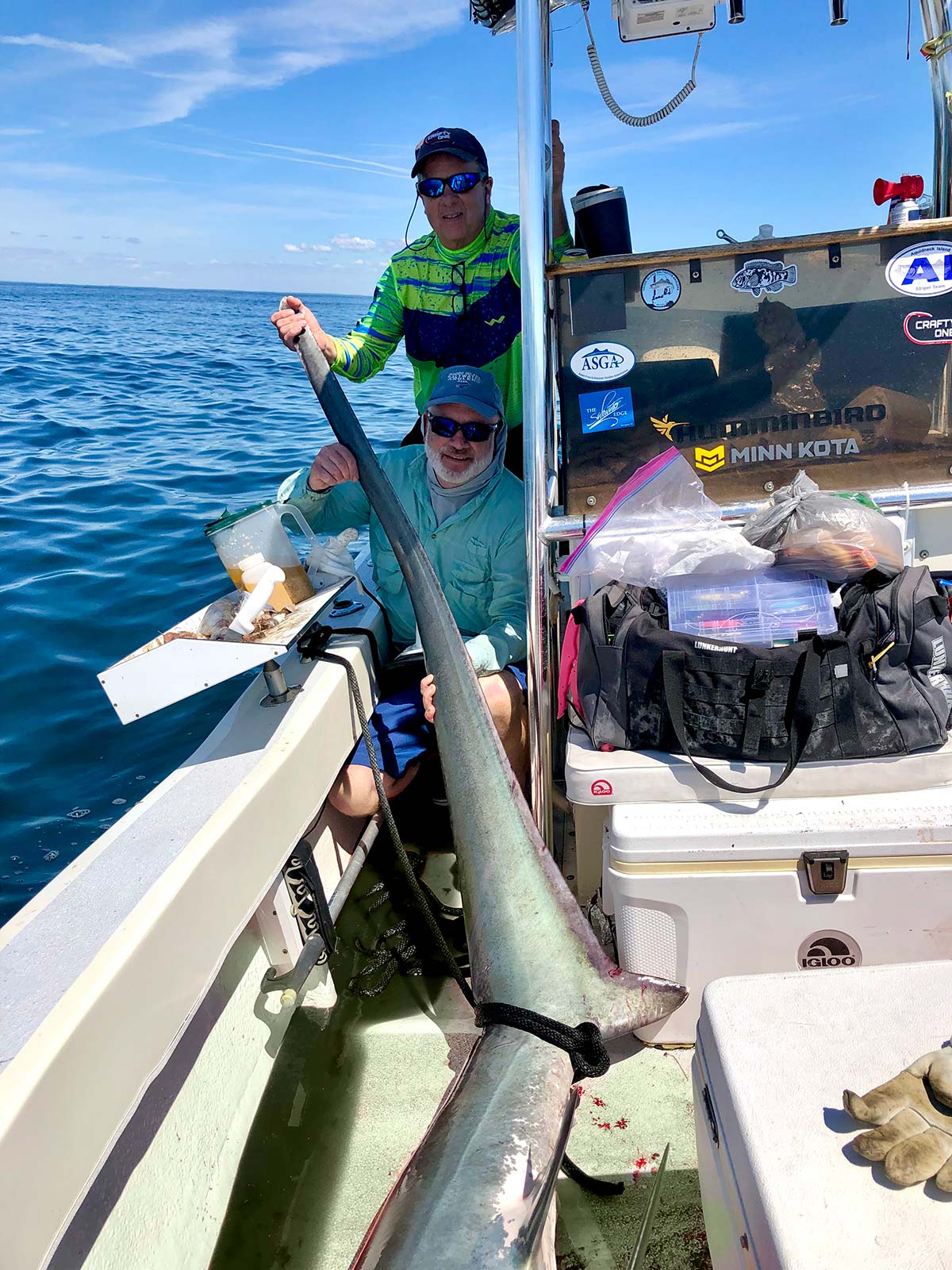
A Learning Experience
Learning point 1: setting up a 20-pound connection from the flying gaff head to the shaft isn’t the right decision and a thicker rope to the gaff head is a better choice than parachute chord even if its 300-pound test. After the gaff separated on the first attempt without penetrating and resulted in a much more upset shark we tried again with a new 40-pound line which was much more effective. If you find yourself in this situation, let me tell you, the shark needs to be pretty close to the boat for the flying gaff to work. Then two more ‘traditional’ gaffs found their mark and we were able to tie her off with a tail rope to a cleat and for the first time in nearly 90 minutes, we all relaxed a bit.
Overall, it was 1 hour and 28 minutes on the rod with standup gear, then a bit of time to allow the fish to bleed out as we slow trolled along; 19 feet of boat doesn’t allow much breathing room or protection if a shark suddenly wakes up in it. Then, with no tuna door, it took us about 20 minutes to actually get her in the boat. We also learned a large blanket worked well to cover the shark and keep it wet and cool for the run back in. We did try to cover it in ice bags as best we could till we got back to home to the ramp under the Sakonnet River Bridge.
Back home, the thresher measured out at 66 inches to the fork and 10 feet, 11 inches, nose to tail. Certainly, more experienced anglers boat larger ones, but for us, we were very happy with that fish and honestly, I’m thankful it wasn’t any larger, especially because trying to get it in the boat was no picnic without a tuna door or block and tackle. I am also happy to report that, while not quite as good as mako, I found the steaks to be excellent in both flavor and texture.
I still don’t have my musky but I was quite happy to be able to check the thresher shark off my personal list.

